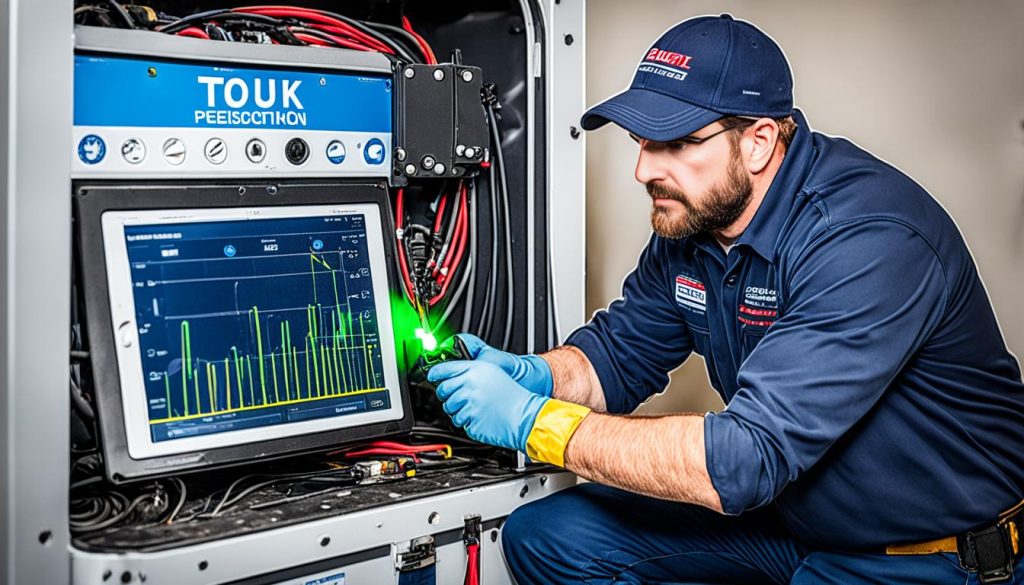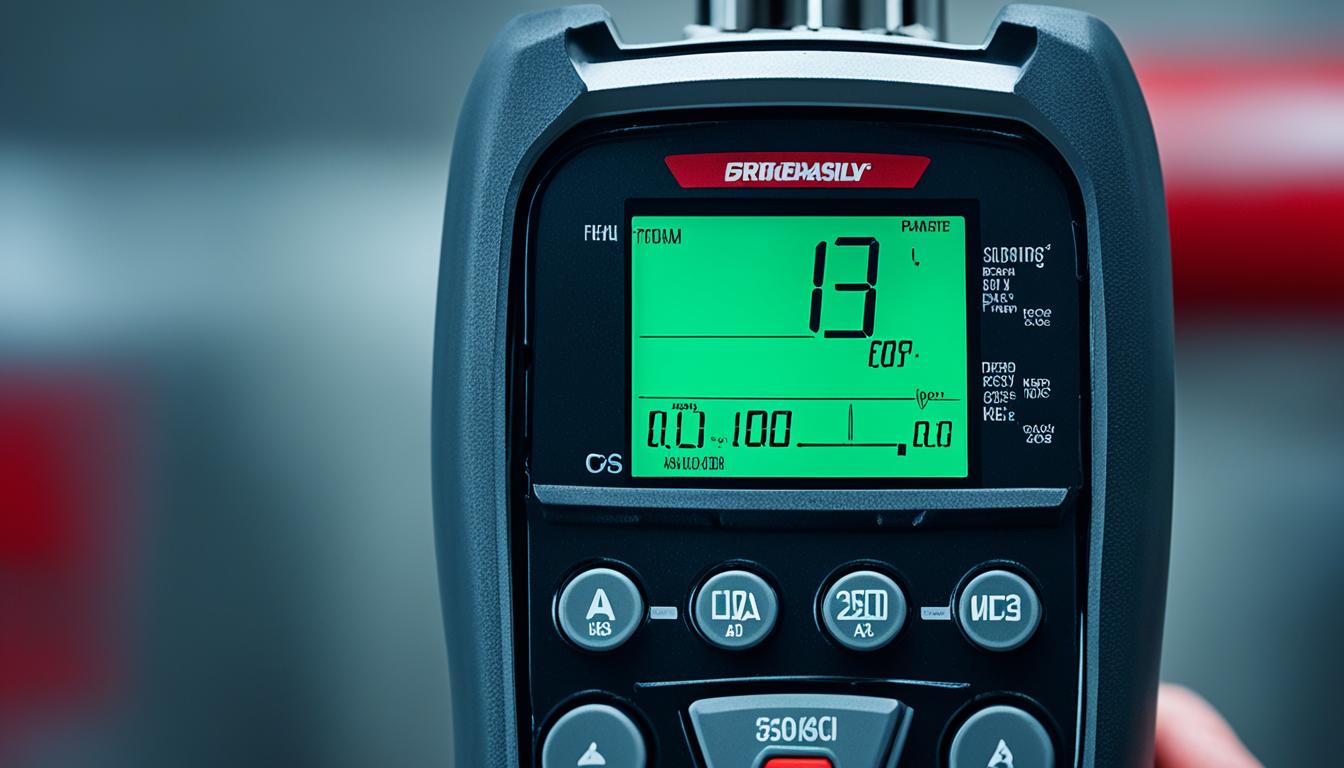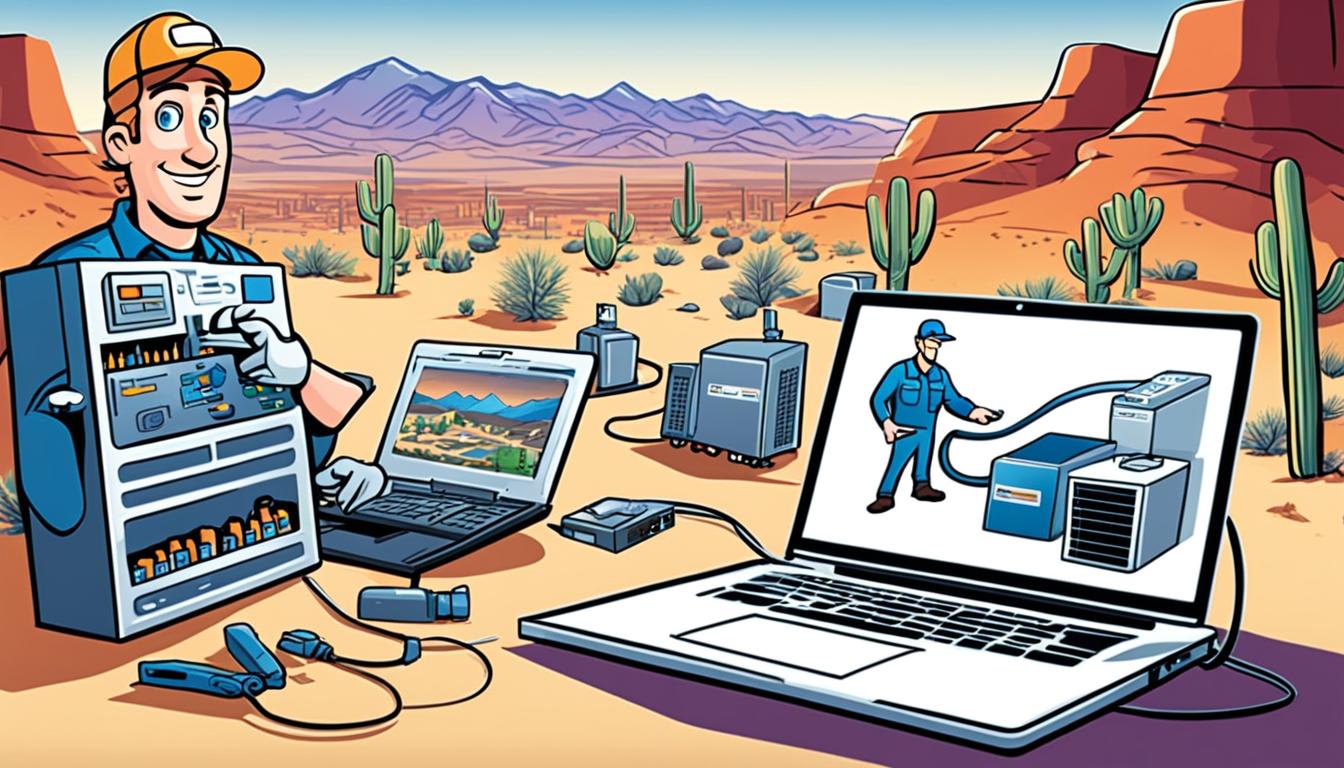Imagine a scorching summer day. The sun is beating down relentlessly, and the sweltering heat feels unbearable. All you can think about is seeking refuge in the cool air of your air-conditioned oasis. But what if that oasis was slowly losing its ability to keep you comfortable? What if there was a hidden leak in your AC system, causing it to work harder and consume more energy?
As an AC repair contractor, you know the importance of detecting and fixing leaks in HVAC systems. It not only ensures optimal performance and energy efficiency but also helps reduce environmental impact. That’s why staying up-to-date with the latest technological advancements in AC leak detection tools is crucial.
Key Takeaways:
- Daikin Industries, Tokyo Gas Engineering Solutions, and RIKEN National Research and Development Agency have developed laser-based technology for remote leak detection.
- The portable R32 detector can detect leaks up to 10 meters away.
- The technology aims to reduce greenhouse gas emissions and improve the efficiency of leak detection.
- The laser-based technology works by emitting an infrared laser and using high-sensitivity detection technology to measure the presence of refrigerant.
- Laser-based leak detection tools offer remote detection, improved efficiency, and enhanced safety compared to conventional methods.
How does the laser-based leak detection technology work?
The laser-based leak detection technology utilizes an infrared laser that emits a specific wavelength corresponding to the near-infrared absorption wavelength band of the R32 refrigerant. By directing the laser towards the targeted object, the diffusely reflected light from the surrounding walls is collected using a lens. This collected light is then subjected to high-sensitivity detection technology, similar to that used in remote methane detectors, which measures the attenuation caused by the presence of R32 in the laser beam’s path.
This innovative technology enables the detector to accurately identify and locate R32 leaks up to a distance of approximately 10 meters, even when windows are obstructing the direct line of sight. The detection process relies on the discovery of the near-infrared absorption wavelength band unique to R32 and the collaborative efforts of industry leaders Daikin Industries, Tokyo Gas Engineering Solutions (TGES), and RIKEN National Research and Development Agency.
Highlights of the laser-based leak detection technology:
- Utilizes an infrared laser emitting a specific R32 absorption wavelength
- Collects diffusely reflected light from the walls using a lens
- Employs high-sensitivity detection technology to measure the light attenuation
- Accurately detects R32 leaks up to a distance of approximately 10 meters
- Can detect leaks through windows, ensuring comprehensive coverage
The laser-based leak detection technology represents a significant advancement in the field of leak detection, offering an efficient and reliable solution for detecting and combating refrigerant leaks in HVAC systems.
What are the benefits of using laser-based leak detection tools?

Laser-based leak detection tools offer several benefits compared to conventional air sampling methods. These advanced tools leverage cutting-edge technology to enhance the effectiveness and safety of leak detection processes in HVAC systems.
1. Remote Detection
The use of laser-based leak detection tools allows for remote detection, eliminating the need for service personnel to physically approach the suspected leak location. This is particularly advantageous when dealing with air conditioners installed in high places or narrow spaces. By enabling remote detection, these tools save time and effort, streamlining the inspection process.
2. Improved Efficiency
Laser-based leak detection technology provides prompt confirmation of the presence of a leak. By quickly identifying and precisely locating the leak, these tools enable technicians to take immediate countermeasures, reducing the time and resources required for leak inspections. This enhanced efficiency can significantly improve the overall productivity of HVAC system maintenance.
3. Enhanced Safety
The remote detection capability of laser-based leak detection tools also enhances worker safety. By eliminating the need for personnel to physically access difficult-to-reach areas, the risk of accidents and injuries associated with accessing high places or confined spaces is reduced. The use of these advanced tools contributes to a safer working environment for technicians.
Overall, the benefits of using laser-based leak detection tools encompass remote detection, improved efficiency, and enhanced safety. By harnessing the power of advanced technology, these tools empower HVAC professionals to detect leaks accurately, expedite repairs, and ensure optimal system performance.
| Benefits | Description |
|---|---|
| Remote Detection | Eliminates the need for physical approach to the leak location |
| Improved Efficiency | Quickly confirms the presence of a leak, enabling prompt countermeasures |
| Enhanced Safety | Reduces the risks associated with accessing difficult-to-reach areas |
What are some other types of advanced leak detection tools?
In addition to laser-based leak detection tools, there are other advanced options available in the market. One such option is wireless HVAC leak detectors, which utilize wireless technology to identify refrigerant leaks in AC systems. These detectors can be strategically placed in various areas and wirelessly transmit the presence of a leak to a central monitoring system. This enables prompt action and helps prevent further damage or inefficiencies.
Another advanced tool is the ultrasonic leak detector, which detects leaks by analyzing the sound produced by the escaping refrigerant. Utilizing ultrasonic sensors, these detectors pick up the high-frequency sound waves generated by the leaks. This method enables technicians to pinpoint the exact location of the leak and take appropriate measures to resolve the issue.
For technicians seeking portability and convenience, portable refrigerant leak detectors are compact devices that can be carried around to quickly locate and assess leaks. These detectors typically use sensors or probes to detect the presence of refrigerant in the air, streamlining the troubleshooting process.





0 Comments